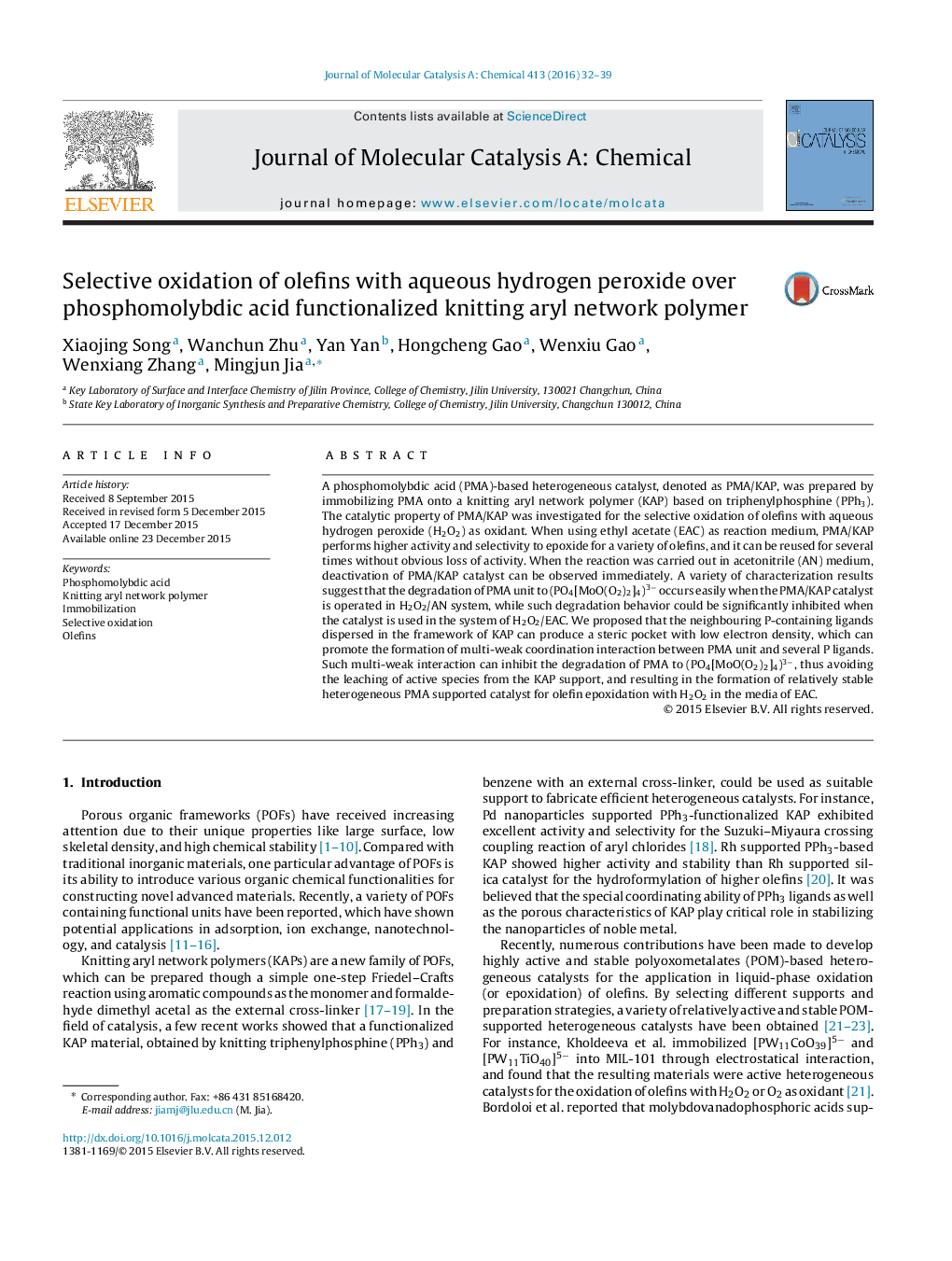| کد مقاله | کد نشریه | سال انتشار | مقاله انگلیسی | نسخه تمام متن |
|---|---|---|---|---|
| 64748 | 48369 | 2016 | 8 صفحه PDF | دانلود رایگان |
• PMA/KAP was obtained by supporting phosphomolybdic acid on PPh3 functionalized KAP.
• PMA/KAP is active and stable catalyst for olefin oxidation with H2O2/ethyl acetate.
• Multi-weak interaction exits between PMA unit and PPh3 ligands knitted in the KAP.
• Degradation of PMA to small species can be inhibited by the multi-weak interaction.
A phosphomolybdic acid (PMA)-based heterogeneous catalyst, denoted as PMA/KAP, was prepared by immobilizing PMA onto a knitting aryl network polymer (KAP) based on triphenylphosphine (PPh3). The catalytic property of PMA/KAP was investigated for the selective oxidation of olefins with aqueous hydrogen peroxide (H2O2) as oxidant. When using ethyl acetate (EAC) as reaction medium, PMA/KAP performs higher activity and selectivity to epoxide for a variety of olefins, and it can be reused for several times without obvious loss of activity. When the reaction was carried out in acetonitrile (AN) medium, deactivation of PMA/KAP catalyst can be observed immediately. A variety of characterization results suggest that the degradation of PMA unit to (PO4[MoO(O2)2]4)3− occurs easily when the PMA/KAP catalyst is operated in H2O2/AN system, while such degradation behavior could be significantly inhibited when the catalyst is used in the system of H2O2/EAC. We proposed that the neighbouring P-containing ligands dispersed in the framework of KAP can produce a steric pocket with low electron density, which can promote the formation of multi-weak coordination interaction between PMA unit and several P ligands. Such multi-weak interaction can inhibit the degradation of PMA to (PO4[MoO(O2)2]4)3−, thus avoiding the leaching of active species from the KAP support, and resulting in the formation of relatively stable heterogeneous PMA supported catalyst for olefin epoxidation with H2O2 in the media of EAC.
Figure optionsDownload high-quality image (150 K)Download as PowerPoint slide
Journal: Journal of Molecular Catalysis A: Chemical - Volume 413, March 2016, Pages 32–39
